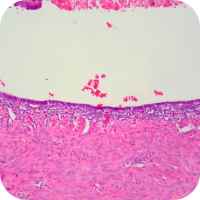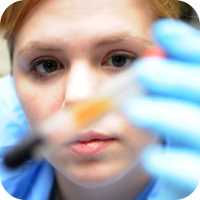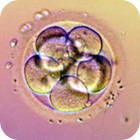What is Endometriosis?

Endometriosis is a condition where the lining of the uterus (called the endometrium) grows in other areas outside of the uterus. It responds to the body’s hormones in the same way as the endometrium within the uterus, and therefore bleeding can occur at these sites during your period. This can cause inflammation and pain, and in severe cases, damage to tissues and scarring. If it occurs around or in the ovaries, then cysts can develop known as endometriomas or chocolate cysts.
What Are the Chances of Having Endometriosis?
Endometriosis is one of the most common gynaecological conditions, but not everyone who has it has problems getting pregnant. It is estimated to affect between 10-15% of women who visit the doctor about a female medical problem. Of those 10-15%, between 30-40% will have difficulty conceiving.
Endometriosis Causes
It is not known what causes endometriosis, but it is known that its persistence and spread is dependent upon hormone release from the ovaries. It is therefore found almost exclusively in women of reproductive age.
Endometriosis Symptoms
Women with endometriosis have extremely variable symptoms. The most common symptom is painful periods which may not respond to simple painkillers, sometimes to the extent that women have to take time off work due to the pain.
The abnormal lining can grow in multiple places throughout the body, and some women find that they get bleeding from the rectum, umbilicus or urinary tract during their periods.
Other symptoms include pelvic pain at times other than during your period and pain during sex.
However, up to 25% of women do not get symptoms at all, and the diagnosis is only made as a coincidental finding when investigating for other reasons, such as for unexplained infertility.
Endometriosis Diagnosis

If you are experiencing the signs and symptoms of endometriosis, make an appointment to see your doctor after unsuccessfully trying to get pregnant for 6 months or more.
Diagnosis can only really be made during laparoscopic surgery. This is keyhole surgery which allows visualisation of the pelvic organs and thus the areas of endometrial tissue outside of the uterus. This also allows for treatment of some of these lesions through cautery (burning off the affected tissue) or laser treatment.
Ultrasound scans are not usually helpful in the diagnosis, but can detect ovarian cysts such as chocolate cysts which are almost only found in endometriosis.
Endometriosis Treatment
Treatment is dependent on how it affects you. In severe cases, where scar tissue causes blockage of the fallopian tubes or cysts damage the ovaries, surgery can remove endometrial tissue, unblock tubes and drain or remove large cysts. Some studies show that this can double the chances of getting pregnant.
In milder cases, the cause of the fertility problem is not always clear, and there is no specific type of fertility treatment which is always used. However medications that stimulate ovulation can be effective, as can IVF treatment.
Where the woman is not currently trying to conceive, there are various options such as anti-inflammatory painkillers, the contraceptive pill, and hormone medications to suppress ovulation.
Links to Popular Related Pages








